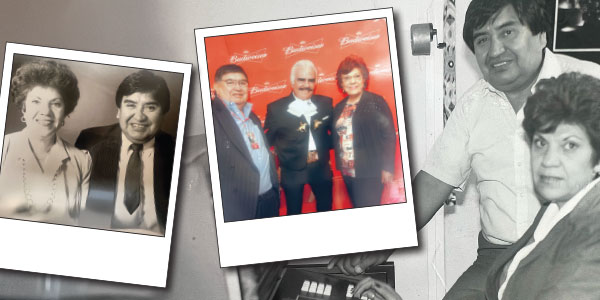
When Stephen Hawking was 21 years old, he was diagnosed with amyotrophic lateral sclerosis (ALS), a progressive neurodegenerative disease. It affects the nerve cells in the brain and spinal cord, which lose their ability to control muscle movement, which leads inevitably to paralysis and death. Hawking, a British University of Cambridge graduate student was given, at best, two years to live.
Last week, Hawking died at age 76. Despite being confined to a wheelchair and dependent on a computerized voice system for communication, the world-renowned physicist, best-selling author, cosmologist and research director at the Centre for Theoretical Cosmology at Cambridge toured and lectured around the world, appeared on popular TV shows and actively pursued his interests.
Regarded as one of the most brilliant theoretical physicists since Einstein, Hawking was recognized in Britain’s New Year Honors and awarded Commander of the Most Excellent Order of the British Empire in 1982. It’s part of a canon of honors and awards the pioneer in physics earned over a lifetime for his considerable contributions.
Hawking married twice and fathered three children. On his 60th birthday, he rode a hot air balloon. Five years later, he took a zero-gravity flight aboard a specially equipped Boeing 727. (Hawking dreamed of traveling into space someday.) After the flight, he was asked why he took such physical risks to which he reportedly replied, “I want to show that people need not be limited by physical handicaps as long as they are not disabled in spirit.”
As extraordinary as are Stephen Hawking’s achievements and tremendous willpower and determination, he’s not alone in beating all odds to excel. The late legendary Frida Kahlo is considered one of Mexico’s greatest modern painters. At age six, Kahlo contracted polio, which damaged her right foot and leg. She was severely injured in a traffic accident at age 25 that shattered her spine, pelvis, collarbone and ribs. As a result, she often used crutches or a wheelchair and suffered from debilitating chronic pain for the rest of her life.
Stevland Hardaway Morris, known to fans as Stevie Wonder has been blind since infancy. Sightlessness didn’t prevent the soon-to-be-68-year-old American singer, songwriter and multi-instrumentalist from scoring 25 Grammy Awards and a Grammy Lifetime Achievement Award. In recognition of his civil rights activism, Wonder received America’s highest civilian honor — the Presidential Medal of Freedom.
There are countless other famous and not-so-famous historical and modern-day people who have succeeded mightily in spite of incapacitating disabilities. A sample of such contemporary models of courage, willpower, resolve and selflessness include Dr. Janice Brunstrom-Hernandez, a famous pediatric neurologist and founder of the Pediatric Neurology Cerebral Palsy Center at St. Louis Children’s Hospital; the late Ralph Braun, Braun Corporation founder and CEO, known as “the father of the mobility industry;” Ecuadoran President Lenín Moreno; the late Helen Keller, author, lecturer and political activist; and T. Alan Hurwitz, former Gallaudet University president.
________________________________________________________________________________________
Venciendo la aflicción con gracia y resolución
Cuando Stephen Hawking tenía 21 años, se le diagnosticó esclerosis lateral amiotrófica (ELA), una enfermedad neurodegenerativa progresiva. Afecta las células nerviosas del cerebro y la médula espinal, que pierden su capacidad de controlar el movimiento muscular, lo que conduce inevitablemente a la parálisis y la muerte. Hawking, un estudiante de posgrado de la Universidad Británica de Cambridge recibió, en el mejor de los casos, dos años de vida.
La semana pasada, Hawking murió a los 76 años. A pesar de estar confinado a una silla de ruedas y dependiente de un sistema de voz computarizado para la comunicación, el físico de renombre mundial, autor de best-sellers, cosmólogo y director de investigación en el Centro de Cosmología Teórica en Cambridge recorrió y dio conferencias en todo el mundo, apareció en programas de televisión populares y persiguió activamente sus intereses.
Considerado como uno de los físicos teóricos más brillantes desde Einstein, Hawking fue reconocido en honor del año nuevo de Gran Bretaña y se le otorgó el Comandante de la Orden más Excelente del Imperio Británico en 1982. Es parte de un canon de honores y premios pionero en física obtenido toda una vida por sus considerables contribuciones.
Hawking se casó dos veces y engendró tres hijos. En su 60 cumpleaños, voló en un globo de aire caliente. Cinco años más tarde, tomó un vuelo de gravedad cero a bordo de un Boeing 727 especialmente equipado (Hawking soñaba con viajar al espacio algún día). Después del vuelo, se le preguntó por qué asumía tales riesgos físicos a lo que, según los informes, respondió: “Quiero mostrar que las personas no necesitan estar limitadas por impedimentos físicos, siempre y cuando no estén deshabilitados en espíritu”.
Tan extraordinarios como los logros de Stephen Hawking y su tremenda fuerza de voluntad y determinación, no es el único que supera todas las expectativas para sobresalir. La legendaria y fallecida Frida Kahlo es considerada una de las más grandes pintoras modernas de México. A los seis años, Kahlo contrajo polio, que le dañó el pie y la pierna derecha. Fue gravemente herida en un accidente de tráfico a los 25 años que le destrozó la columna vertebral, la pelvis, la clavícula y las costillas. Como resultado, usaba muletas o una silla de ruedas y sufrió de dolor crónico debilitante por el resto de su vida.
Stevland Hardaway Morris, conocido por los fanáticos como Stevie Wonder, ha estado ciego desde la infancia. La intrepidez no impidió que el cantante, compositor y multiinstrumentista estadounidense, que pronto tendrá 68 años, obtuviera 25 premios Grammy y un Grammy Lifetime Achievement Award. En reconocimiento a su activismo por los derechos civiles, Wonder recibió el más alto honor civil de Estados Unidos: la Medalla Presidencial de la Libertad.
Hay un sinnúmero de otras personas históricas y modernas famosas y no tan famosas que han tenido éxito a pesar de incapacidades. Una muestra de tales modelos contemporáneos de valentía, fuerza de voluntad, determinación y desinterés incluyen a la Dra. Janice Brunstrom-Hernandez, una famosa neuróloga pediátrica y fundadora del Centro de Parálisis Cerebral de Neurología Pediátrica en el Hospital Pediátrico St. Louis; el difunto Ralph Braun, fundador y CEO de Braun Corporation, conocido como “el padre de la industria de la movilidad”; el presidente ecuatoriano Lenín Moreno; la difunta autora Helen Keller, conferenciante y activista política y T. Alan Hurwitz, ex presidente de Gallaudet University.










